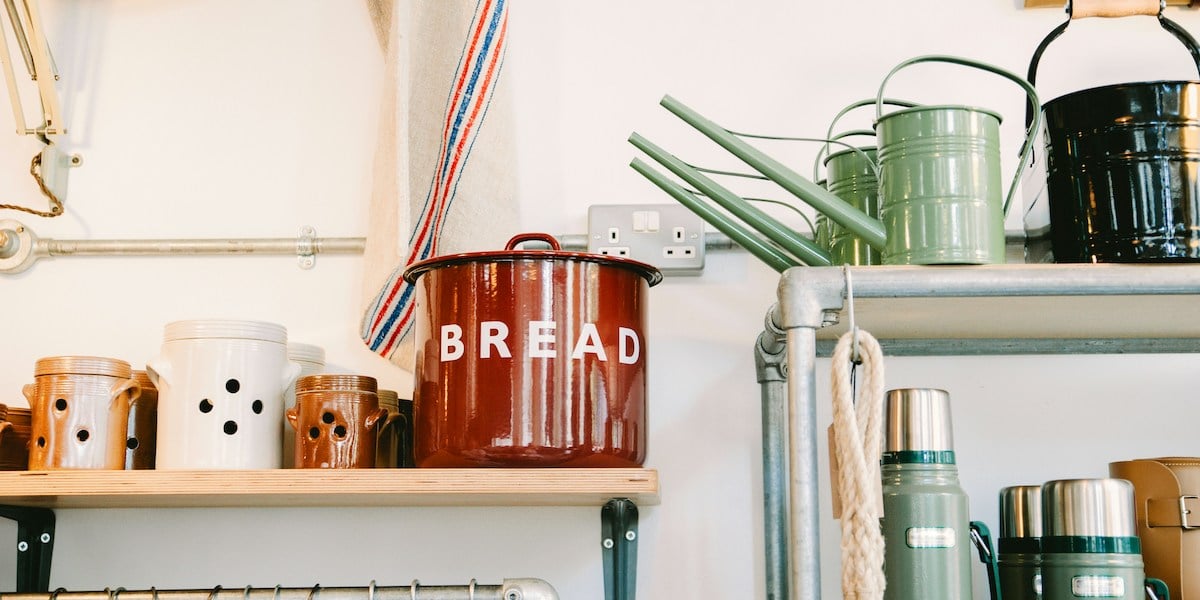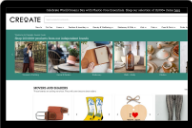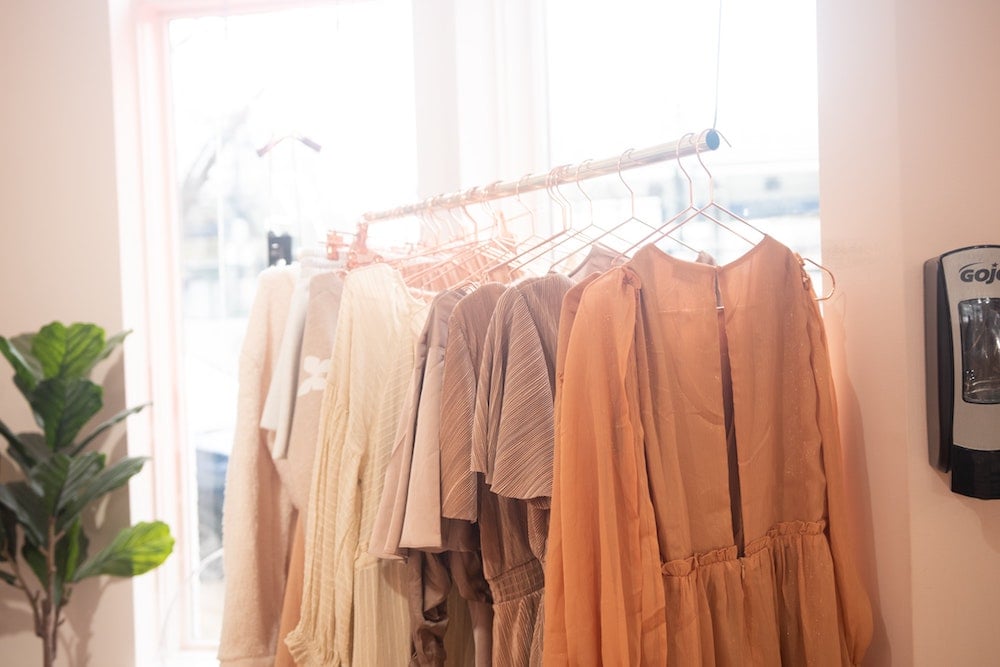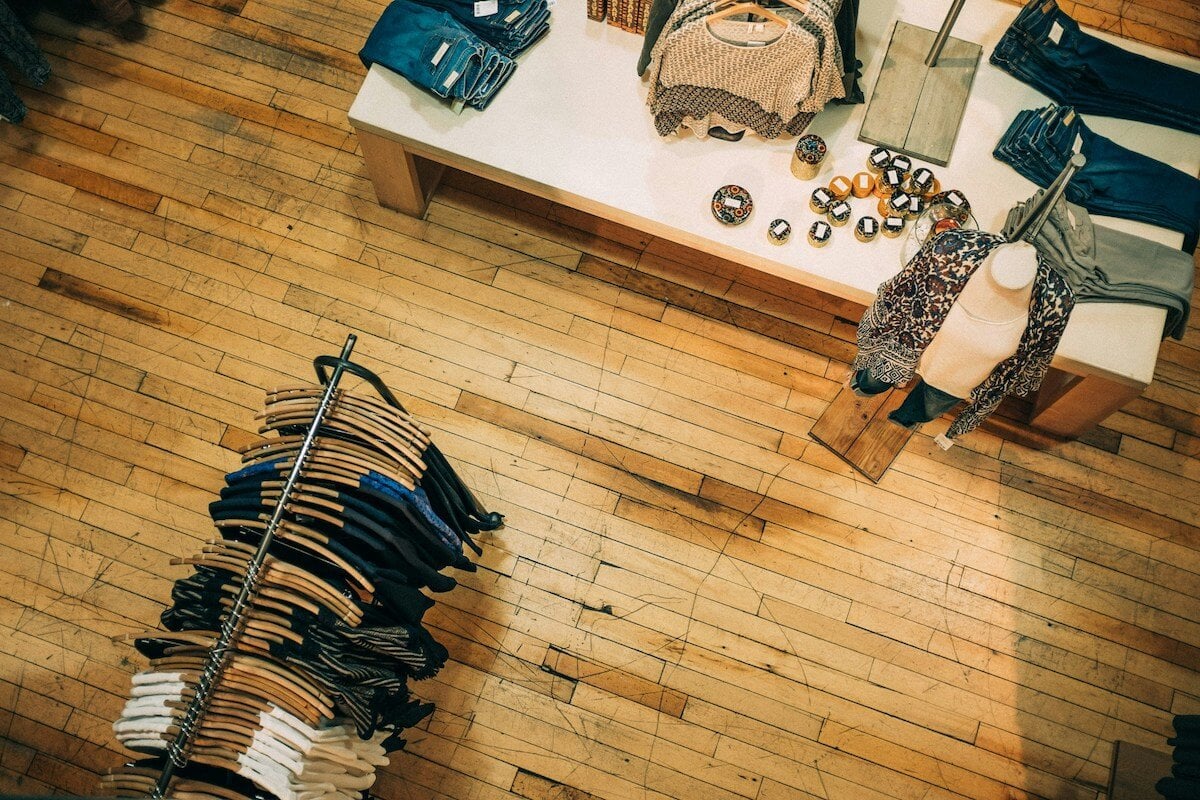
If it’s your first time setting up shop, you may currently be tackling the fun but not so small question of: how do I buy wholesale for resale?
We say fun because (and we may be biased here…) the quality and variety of wholesale suppliers, and the variety of platforms you can buy wholesale stock from, are surely better now than ever before.
In just a few clicks, hand-stitched baby clothes could be on their way to you from the latest trending Danish brand. Or a sole trader could be starting work on your order of ombre candles in the next town over. Global and local, ethical and experimental; it’s all out there, ready for you.
In this guide, we’ll not only walk you through the logistics of buying wholesale (spoiler: it's super easy now), we’ll also give you some tips on how to choose the right wholesale suppliers. How to know if the products you like are actually going to be profitable.
CREOATE started life as a retail store and we — like many other independent retail stores — learnt some valuable lessons about sourcing stock in those first few months. Read on for our key advice.
On this page:
- What is wholesale?
- 5 Ways to find wholesalers
- What should you look for in a wholesale partner?
- Other product sourcing options: white label products & manufacturing
- How to spot product trends (and when to ignore them)
- FAQs
But first: what is wholesale?
But first, let’s take a moment to answer the important question — what even is wholesale?
Wholesale has two similar but distinct meanings. It can mean to buy goods (often food) in bulk for your own use at places like Costco, or it can refer to sourcing stock to sell on to consumers, either in a physical brick and mortar store, online, or a combination of the two.
In this guide, we’re going to be talking through the second of these options; tips and methods for sourcing stock for your business from brilliant wholesale providers (in other words, buying wholesale for resale).
📚 Find out more: Wholesale 101: what is wholesale?
How to buy wholesale: 5 ways to find wholesalers
Now the definitions are out the way, let’s get straight into the good stuff: how to buy wholesale products to sell (or more specifically, from where).
1. CREOATE
CREOATE is a wholesale marketplace designed to help independent businesses thrive. It’s a place for you to buy stock for your store in manageable quantities, directly from over 6,500 independent makers and brands. Think of it like buying a candle for yourself from somewhere like Etsy, but instead you’re buying, say, 50 candles at a wholesale price to sell on in your store.
At CREOATE, we take the risk out of choosing the right wholesale products by offering 60-day returns on brands you haven't bought from before, as well as the option to shop multiple brands together, and check out just once. Brands also set manageable minimum order values (as low as £75).
👋 Create an account to start shopping on CREOATE. Signing up is quick, easy and free.
2. Other wholesale marketplaces
CREOATE isn’t the only wholesale marketplace out there! Each one works slightly differently, and has its own USP. Here are a few other notable platforms:
- Alibaba — One of the original wholesale marketplaces, focusing on high volume and low cost items
- JOOR — Specialises in linking up luxury fashion brands with large retailers
- Faire — A US-based marketplace with a wide range of gift, lifestyle, and fashion products
📚 Find out more: Top 7 wholesale marketplaces: which is right for you?
3. Trade shows
Trade shows take place throughout the year in major cities across the world, with thousands of brands come together to exhibit their products over a period of a few days. Retailers and buyers attend and browse the different brands on offer, placing orders for stock either at the show, or using the time to make connections which might result in orders later down the line.
Trade shows give you the chance to handle products and meet the brand in person, which for some people makes them an invaluable part of buying. But given the time commitment and location, they aren’t always an accessible option for smaller independent retailers.
Some of the most popular trade shows include:
- Maison&Objet (Paris) — for homeware, gifts, and all things hand crafted
- MAGIC (Las Vegas) — for fashion, footwear and accessories
- Outdoor Trade Show (OTS) (Birmingham) — for outdoor and sports gear and clothing
📚 Find out more: Everything you need to know about attending trade shows
3. Local craft markets
If stocking local products is important to you, look up your local craft market or makers’ market. This can be a great place to connect with local artists and makers which you can then reach out to about wholesale options.
Of course, you’ll need to come to an arrangement that works for both of you. Working with someone who is hand making all their products may mean you can’t always get a lot of stock quickly, and you’ll have to meet in the middle when it comes to things like a returns option, and margins (placing the products on consignment — where you only pay for what sells, and return the rest — may work best for both of you to start with).
📚 Bookmark for later: Margin & Reverse Margin Calculator
4. Dropshipping
Dropshipping is quite a unique way of sourcing and selling products because you never actually come into contact with the physical products themselves. Instead, you market and sell them online, and the order is then passed straight through to the manufacturer, who ships the product directly.
Dropshipping sounds like an awesome deal; all the fun parts (marketing, branding… money-making), without any of the logistical burdens. But it’s a business model you should approach with low expectations at best, and real caution at worse.
Five or so years ago dropshipping was an open, nothing-to-lose market. But now, you’ll be up against tough competition, with low margins, potentially dodgy suppliers, and the need to pump significant money into paid ads before you can break even. This Wired article contains some cautionary tales.
So if you do give dropshipping a go, approach it with caution and moderation. Oberlo is one dropshipping platform that makes it easy to source dropshippable products online, if you do decide to test it out.
📚 Find out more: What is dropshipping?
5. Distributors
Larger brands and retailers, smaller specialised retailers, and internationally-based brands often still prefer to work with wholesale distributors.
A wholesale distributor normally works with brands in a particular niche (e.g. outdoors gear). They have built relationships with key buyers, so are in a unique position to get new products and brands in front of them.
Distributors are a popular option for larger brands who are looking to break into new territories. Having representatives ‘on the ground’ who know the local market is a huge help; distributors can be valuable builders of brand knowledge and awareness, alongside the actual distribution.
If you are large enough to work with a distributor, chances are you won’t have to look for one — they’ll come to you! You’ll often find them presenting alongside brands at trade shows, too.
The arrangement they have with brands and retailers varies; sometimes you buy a set amount of stock, or sometimes you can take it on with a returns guarantee, where you only pay for what you actually sell. Either way, the distributor takes a cut in the process — but it’s likely to be the brand that feels this more keenly than you, the retailer.
📚 Find out more: Wholesaler vs distributor: what’s the difference?
What should you look for in a good wholesale partner?
All in all, it’s easier than ever before to find wholesale products for your store. But besides making sure the products feel like a good fit for your shop and customers, what should you be looking for in a good wholesale supplier?
1. Reliability & good communication
As with any business partnership, communication and reliability are key. You want a wholesale partner who responds to your queries quickly, and sets accurate expectations when it comes to order processing and shipping time.
When you're shopping on CREOATE, look out for indicators like this ‘Last Active’ badge to spot the most engaged wholesale partners. Besides this, you can check reviews, and take recommendations from other businesses.
2. Access to images & product details
Photographing your new stock takes time and resources. If you’re able to access existing images (and product info), this makes uploading products to your website a lot easier. And if the images and product descriptions are really good, this will really set them up for online success.
Whenever you buy a wholesale product through CREOATE, you’ll automatically get access to all the product images and information, and can download this directly from your dashboard. If you're buying directly from the brand or a distributor, it's worth checking what you'll get access to, and sampling the quality.
📚 Find out more: Tips from a photographer: making the most of your product shoot
3. A lead time that works for you
While traditional wholesale models often need you to order months in advance, brands selling through wholesale marketplaces generally have a much quicker turnaround. But if you need your stock to arrive by a certain date, it’s important to pay close attention to a wholesaler’s lead time.
Keep in mind also that what ‘lead time’ actually means may vary from platform to platform. On CREOATE, lead time is the time it takes a brand to process your order, so the time from the order being placed to it being fulfilled. Shipping time isn’t included, but shipping will likely be fastest from brands in your own country, so make use of the country filter to narrow this down even further.
And if you’re ever in doubt, just shoot the brand a quick message to confirm timings.
💡 Top tip: Can't afford a delay? Look out for our ‘Super Shipper’ badge, which is awarded to the brands that most consistently deliver on shipping expectations.
4. Profitable margins
Okay so you like the brand, and you like the product — but will they make you enough money?
Retail store owners often tell us that the importance of margins is something they hugely underestimated when opening their store.
A product’s margin is how much smaller the wholesale price is than the retail price, expressed as a percentage. But as you also have to account for overheads and other costs of your business, a ‘good margin’ may be more than you think — particularly if you have a physical store, which generally costs more to run.
Here’s a rough guideline of what you should be looking for when it comes to your product margins, depending on the type of product:
| Category |
Suggested margin for retailers (minimum) |
|
Beauty and wellbeing |
35 - 40% |
|
Homeware and home decor |
45 - 50% |
|
Kids clothing and items |
50 - 60% |
|
Stationery |
45 - 55% |
|
Fashion and accessories |
45 - 55% |
|
Pet accessories |
30 - 40% |
|
Food and drink |
30 - 40% |
📚 Find out more: How to plan your wholesale pricing strategy
5. Good sell-through rate
Your sell-through rate is how much of your inventory you sell within a month (or other predetermined time frame) versus what you receive from suppliers. A good sell through rate for a retailer is considered to be around 80%, with most sitting within an average of 40-80%.
Get to know your average sell-through rate, and use this when evaluating the success of brands you start stocking. If the sell-through rate is lower than your average, it may be time to tweak your product selection, or reevaluate whether you want to continue stocking this brand.
📚 Bookmark for later: Retail & wholesale glossary: 60+ terms & acronyms to know
Other product sourcing options
1. Shop white label goods
White labelling, also known as private labelling, is the process of applying your own branding to ‘raw’ products. Like adding your own label to a candle that’s already otherwise ready to sell.
Sound appealing? Check out the selection of white label products we have on CREOATE.
2. Making or manufacturing your own products
If you want to make, brand or manufacture your own products, where you go to source these materials will be different from when you’re just looking for ready-to-go stock to sell in your retail or ecommerce store.
Using manufacturers to make products from scratch:
If you have an idea for a product, but it isn’t something you can make yourself (or you just want to make in a larger volume or at a cheaper price), you’ll need to collaborate with a manufacturer.
Finding a manufacturer you can work well with takes a bit of investigating. There’s the question of going with a domestic factory, or an overseas one, among others. Our guide to manufacturing a product will help you weigh up your options, and give you places to look for trusted manufacturers.
📚 Find out more: How to manufacture a product
Sourcing raw materials to make the products from scratch yourself:
Many CREOATE sellers make their own products by hand. It’s part of what makes buying from a wholesale marketplace so special!
If you’re kinda crafty and fancy this idea, you’ll just need to source the raw materials and get to work. Alibaba and other wholesale marketplaces sometimes sell raw materials (like wax for candles), or there are normally some category-specific sites which you can find with a simple Google search. If you’re making on a smaller scale, give eBay a go.
Depending on what products you’re looking to make, there may be some more sustainable and creative options on hand, too. Take a leaf out of Salix Moon Apothecary’s book; its founder Louise grows many of the herbs used to make the brand’s botanical elixirs in her own garden. Or look to Sarah, who takes found objects and turns them into wearable treasures.
How to spot product trends (and when to follow them)
When it comes to buying wholesale products for resale, we’ve covered the ‘who’ and the ‘where’. Now it’s time to drill down into the ‘what’, and in what volumes
More specifically, we’re going to be looking at trends: how to spot them, and when to avoid them altogether.
Buying for holidays
Christmas and Black Friday combine to make November and December by far the biggest spending months in the retail calendar. On CREOATE, we normally start noticing Christmas-related shopping habits on our site around August as retailers start to get stocked up for their busiest season.
💡 Top tip: Remember that Christmas cards and Christmas decorations will typically peak in sales before general gift items (as they are used throughout December, rather than saved for Christmas Day), so you'll need to get these in good time.
Outside of the Christmas holidays, ‘back to school’, Mother’s Day, Easter and Valentine’s Day are all spending occasions that are worth factoring into your retail calendar.
If you’re stocking up ahead of a holiday, be sure to know the returns policy on your wholesale stock, if one exists. Some wholesale marketplaces, for example, exclude seasonal products from their returns policy, making overstocks a bigger risk. Here at CREOATE, you’re free to return seasonal stock within 60 days.
How to find what’s popular:
Starting with a blank shelf — proverbial or literal — feels daunting. And while it’s always most important to stay true to your brand, values and customers, there’s no harm in keeping up with what’s trending — even if that’s just so you can then decide to go against the grain.
“It’s fine to follow trends, that’s where sales are, and if you get in early, even better. But if there’s a trend that is established, you shouldn’t just do it for the sake of it, or you risk melting into the background. Even better, if you have a good idea but it’s off-trend, go for it, not everyone wants to buy what everyone else has.” — Jack, Paper Plane
📚 Find out more: Key insights from our trends in retail discussion
Here are some ways to stay in the loop with current product trends:
1. Subscribe to CREOATE emails
From ‘Rising stars’, to last month’s bestsellers and this week’s ‘New in’, our email subscribers get an exclusive look under the CREOATE hood to see what other indie retailers are buying in their droves.
👋 Not got a CREOATE account yet? Sign up here to stay in the know.
2. Shop product ‘bundles’
Like the look of a certain brand, but not sure which products to pick? ‘Bundles’ are a selection of bestselling products from each brand that work well as a group, and are put together by the brand itself.
3. Exploding topics & Google trends
We love both Exploding Topics and Google Trends as tools for discovering emerging trending products by search volume.
4. Market & competitor research
They say if you want to be a writer, you should read everything you can. The same principle applies to selling products — you better be prepared to put some serious time into shopping, and understanding your niche.
Go into shops, or online, and see what catches your eye, and the eyes of those around you. What makes a great display? What are people buying? Observe and (where possible) engage with those shopping around you to help understand how to build out a great assortment.
Final thoughts
When it comes to buying wholesale, there really are more options available than ever before.
CREOATE is a wholesale marketplace that takes the risk out of choosing products, with free 60-day returns on anything that doesn’t sell. But when it comes to picking a bestseller, there’s lots of easy due diligence that you can do, too -- we've covered all of our best advice above.
FAQs
Do you need a business licence to buy wholesale?
This depends on where you’re buying from, but broadly speaking there is no legal restriction on who can buy wholesale. Any restrictions that exist are put in place by the platform you’re buying from, or the contract you have with a supplier.
CREOATE, for example, only sells wholesale for resale. Only registered businesses can buy through our platform, and this is something we check when you create an account. But Alibaba, for example, doesn't have such stringent rules in place; anyone can buy wholesale from their site.
If you want to sell products, there are licences and permits to be gathered. Be sure to check up on any business licences and rules according to where you’re based, and how you’ll be selling.
How can I purchase wholesale clothing?
Several of the options we outlined above are perfect for shopping wholesale fashion for resale. If you'd like to explore brands in person, PureLondon is a major fashion trade show that takes place in London. This year (2024) it's taking place from 14th-16th July. You can also shop thousands of independent fashion brands wholesale directly from CREOATE; we have women's clothing, men's clothing, and kids' clothing, too.
👋 Create an account to start shopping on CREOATE today. Signing up is quick, easy and free. Join over 100,000 retailers taking the hassle out of wholesale.








